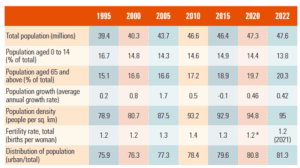U.S. Mortality Still Looks High: Swiss Re

Swiss Re also trying to understand what the underlying causes of death might be.
The list of suspects includes COVID-19, but it also includes long COVID; conditions such as diabetes and heart disease; and “deaths of despair,” or deaths from conditions such as suicide, the effects of alcohol and the effects of opioid use.
American exceptionalism: COVID-19 hit the entire world hard, but it hit the United States especially hard.
The persistent, milder mortality gap might be following a similar pattern.
“We do see it globally,” Sprackling said. “We have seen excess mortality in some countries.”
But, at this point, he said, the gap seems to be wider in the United States.
Benchmarking: The COVID-19 pandemic has been the worst one that anyone living and working in insurance had ever experienced, and it changed the way that people connected with life insurance thought about pandemics, Sprackling said.
“This has raised awareness of the importance of life insurance,” he said. “No one’s bullet proof.”
Swiss Re has paid about $3.5 billion in pandemic-related claims.
In spite of the high claim payment total, Sprackling said, the COVID-19 pandemic “was nowhere near the extreme scenarios we’d tested for.”
The reason that pandemic hit life insurers relatively lightly is that, unlike the 1918 flu pandemic, which often hit relatively young, working-age people harder than it hit older people, COVID-19 tended to be harder on older people who no longer had life insurance, Sprackling said.
In part because of the uneven impact of the pandemic, and in part because North American life insurers entered the pandemic with high capital levels, “this was an earnings event,” Sprackling said. “It was not a capital event.”
Neil Sprackling. Credit: Swiss Re




